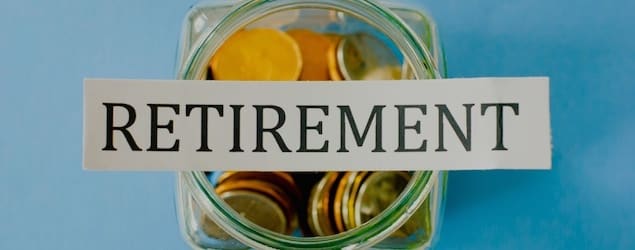Social Security: A Bad Deal For the Young and the Old

Probably the most plausible argument for Social Security is that it has made Americans better off financially, lifting millions of seniors out of poverty, and providing all of us with the security of knowing that we will have a decent pension in old age. But none of that is true.
By far the best examination of this issue that I’m aware of comes from economist Edgar K. Browning’s 2008 paper “The Anatomy of Social Security and Medicare.” Let me say at the outset that I disagree with the paper in a number of respects. Browning comes out in support of “private” Social Security accounts and he doesn’t challenge the morality of Social Security.
I have one further objection, more relevant to the present discussion. The purpose of Browning’s paper is to answer the question, “Is Social Security a good deal?” He starts his analysis by comparing the “implicit rate of return” of Social Security to the rate of return on private investments.
That’s not a legitimate way to look at things. Social Security isn’t an investment — not in any sense — and even though Browning is clear that the Social Security taxes one pays aren’t saved and invested but immediately handed out to current retirees (or spent on other government programs), this language confuses that issue. To talk about the “rate of return” on Social Security is like talking about the “rate of return” Bernie Madoff’s victims got from his Ponzi scheme.
Ultimately the claim that Social Security enriches us is false regardless of how much someone receives in Social Security handouts. In the end, no responsible individual benefits when the government has the power to seize as much of a person’s wealth as it deems in “the public interest” and force him into collectivized welfare schemes. (There are many reasons why this is true, but just on a financial level, a person may rationally value spending a certain portion of his income today regardless of how much that money might be worth decades in the future. For such a person, being forced to forego spending that money today represents a loss, irrespective of any future “return.”)
But what Browning’s analysis allows us to see with unmistakable clarity, and the reason I’m drawing attention to it here, is that welfare statists have presented us with a false alternative: the claim that we can either help millions of seniors retire with dignity or follow some free-market ideology that will effectively throw Grandma off a cliff. As Browning shows, it is Social Security and Medicare that have thrown all of us off a cliff.
The entire paper is worth reading, but I want to highlight its central findings.
Browning notes that if we’re talking about returns on long-term investments, small differences year-to-year add up to enormous differences over time, thanks to the power of compound interest.
Consider a person who contributes (or pays Social Security taxes of) $200 every month ($2,400 a year) to a retirement fund for forty-five years (say, from age twenty-two to age sixty-six). How much will he have accumulated when he retires at age sixty-six? The following numbers show how the accumulated amount depends on the rate of return; the figures in parentheses approximate the annual pension that such an amount can finance.
At 1 percent $136,438 ($8,868)
At 1.5 percent $154,305 ($10,030)
At 2 percent $175,223 ($11,389)
At 3 percent $228,645 ($14,861)
At 4 percent $302,900 ($19,689)
At 5 percent $406,976 ($26,453)
At 6 percent $553,954 ($36,007)
At 7 percent $762,943 ($49,591)
The specific case we are examining here is analogous to a worker who earns approximately $22,000 a year because such a worker pays Social Security taxes of approximately $2,400 a year. If he gets a 1.5 percent return . . . he will accumulate a total of $154,305 at age sixty-six. That amount can provide an annual pension of $10,030 for the remainder of his life, which is only 45 percent as large as his preretirement annual earnings. However, if he achieves a 5 percent return, his accumulation is $406,976, which can provide a pension of $26,453, or 20 percent more than his earnings before retirement. And if he gets 7 percent, his accumulation is more than three-quarters of a million dollars, with an annual pension of $49,591. His pension is nearly five times as high if he receives a rate of return of 7 percent rather than 1.5 percent. Such is the power of compound interest over a working lifetime.
So what “rate of return” can people expect from Social Security? Browning argues that retirees now and into the foreseeable future can expect only a 1.5 percent “rate of return.” How does that “rate of return” compare with what someone could have earned had he remained free to save and invest his own money? Here’s Browning:
The obvious alternative is for people to save individually for retirement (or through company-sponsored pension plans), accumulating assets in the form of stocks or bonds that then finance retirement income. According to Jeremy Siegel’s definitive study Stocks for the Long Run, the real compound annual rate of return on stocks has averaged 6.9 percent over the past two hundred years (from 1802 to 2001). The returns have been remarkably stable over shorter (but still quite long) subperiods, averaging 6.9 percent since 1926 and 7.1 percent since World War II (from 1946 to 2001), for example (2002, 12–13).
Stocks are risky, and their returns vary greatly over short periods. Those who want a guaranteed rate of return normally choose bonds. Since World War II, corporate bonds have generated real returns that average approximately 4 percent. Many investors choose portfolios with stocks and bonds. Martin Feldstein and Andrew Samwick point out that a portfolio composed of 60 percent stocks and 40 percent bonds has generated a yield of about 5.5 percent since 1946 and over the entire period since 1926 (1997, 120).
These yields (stocks 7 percent, bonds 4 percent, and mixed 5.5 percent) that have resulted from private savings in the past provide a perspective on the deal provided by Social Security. Certainly, for those retiring now and even more so for future retirees, the implicit returns implied by Social Security pensions pale in comparison with those of private investments. Recall from my earlier example that the pension generated by a 7 percent return (stocks) is five times as large as that produced on average in the long run by Social Security (which has a 1.5 percent rate of return). A 4 percent return (bonds only) will produce a pension about twice as large as Social Security, and the 5.5 percent return from a portfolio of stocks and bonds will produce a pension three times as large.
Most analysts would stop here. But Browning grasps that we have so far dealt only with the direct costs of Social Security. But Social Security has at least two major indirect costs: it causes less capital and less labor to be supplied to the economy — two of the things that fuel economic progress. (For details see Browning’s paper as well as Chapter 6 of my book RooseveltCare.)
What do these indirect costs amount to? It’s hard to say: they are real but hidden. But Browning gives us economists’ best estimates to date:
[T]he available evidence suggests that Social Security has reduced GDP by 5 to 10 percent. . . .
With 2005 GDP at $12.5 trillion, a 10 percent reduction means that GDP (and personal incomes) would have been about 11 percent higher had Social Security (and Medicare) never been enacted. On a more personal level, note the implication of this calculation: the average household in the United States would have had an income $12,175 greater than its actual income in that year. The average household thus loses more than $12,000 from Social Security each year, and that loss comes before the household members pay their Social Security taxes.
So how does this affect Social Security’s already paltry “rate of return”? Browning concludes: “[W]hen we account for the hidden costs of Social Security, it is evident that most, if not all, current and future retirees are worse off than they would have been if the system had never begun.”
What about past retirees, though? As Browning notes, poverty among the elderly did in fact decline from 24.6 percent in 1970 to 10.1 percent in 2005. Doesn’t Social Security deserve at least some of the credit?
[T]hat rate would have gone down without Social Security because of the growth in earnings that occurred during this period. Perhaps it would have declined even more without Social Security.
In principle, Social Security affects poverty among the elderly in two opposing ways. First, it increases poverty by reducing the accumulated assets people bring to retirement (reduced saving), and then it reduces poverty by providing the government pension. Which effect is larger is by no means clear. Consider that retirees in the lowest earning categories in table 1A [see Browning’s paper] will receive an implicit rate of return on taxes paid of approximately 3 percent (slightly more for one-earner couples) in 2008. Had they invested these same taxes in a balanced portfolio (60 percent stocks and 40 percent bonds), they would have received a return of approximately 5.5 percent. In view of the calculations reported earlier, this difference implies that their retirement income would be more than twice as great had they invested the funds privately. There would likely be fewer poor among the elderly today if they had been permitted (or required) to save privately when younger rather than participating in Social Security.
Occasionally you’ll see a news story about a twisted arsonist who tries to rescue people from a fire he himself set. Well, that’s pretty similar to the way Social Security treats seniors. After making it incredibly difficult for them to prepare for old age when they are young, it “rides to the rescue” when they are old and unable to fully support themselves.
Productive and responsible seniors would not need “rescuing” if Social Security had never existed — just as victims of arson would not need “rescuing” if their houses had not been torched in the first place. To keep propping up Social Security is to fan flames that should be extinguished.



